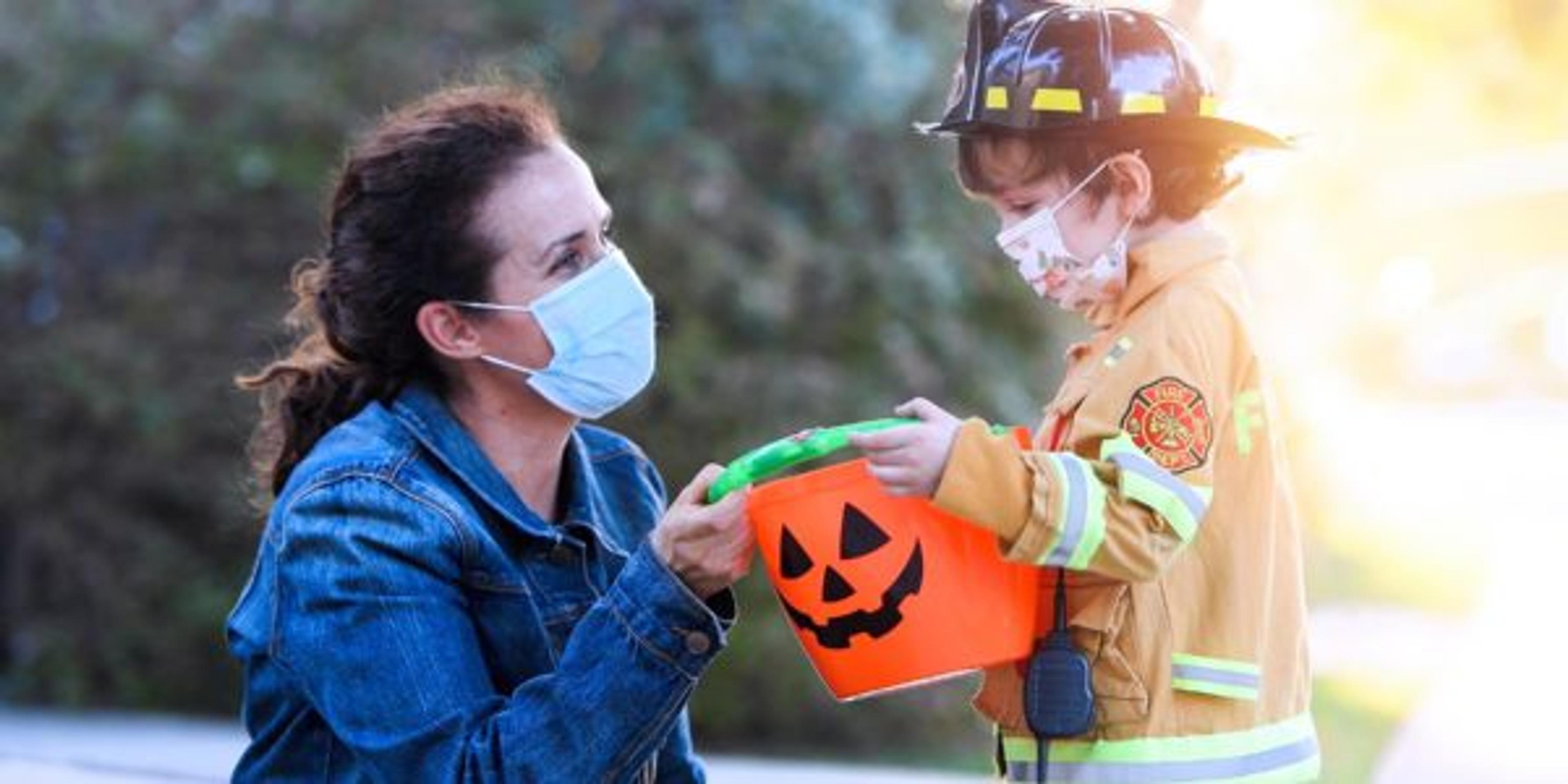Spooky and Safe Ways to Celebrate Halloween

Shanthi Appelo
| 3 min read

Holidays aren’t exactly known for being healthy, but this year there are more health considerations to keep in mind beyond the usual sugar rush. To prevent the spread of the coronavirus, many holidays have been spent in a different way and Halloween will follow suit. Here are some safe, healthy alternative ways to get spooky this season.
Make Healthy Fun
The average child can consume 3,500 to 7,000 calories of Halloween candy. It would take an 185-pound person an entire workday of non-stop cross country running to burn off that amount of calories.
Crafting with healthy food makes it more fun to eat. Add in some fresh options for festive Halloween snacks before the attention turns to candy:
- Mandarin orange jack-o’-lanterns: Draw faces with a permanent marker on a mandarin orange peel.
- Banana ghost mummies: Peel and cut a banana in half, place the cut end of the banana on a popsicle stick and place chocolate chips for eyes and a mouth. To finish it off, drizzle some peanut butter “bandages” on the banana.
- Marshmallow apple mouth: Slice an apple in half and create a slit to apply peanut butter. Then apply marshmallows as teeth and use it as a prop.
- Kiwi and strawberry monsters: Let Mike Wazowski from “Monster’s Inc” make a comeback this Halloween by making these snacks. Peel a kiwi and cut a slit, apply slivered almonds as teeth, stick on a strawberry slice for a tongue and apply mini marshmallows topped with a chocolate chip as eyes.
Offering up healthy snacks to trick-or-treaters instead of candy bars can help keep the night fun with fewer empty calories:
- Animal crackers
- Baked chips
- Dried fruit
- Fruit snacks, ideally made from 100 percent fruit juice
- Mini toothbrushes and mini toothpastes
- Nuts
- Pretzels
- Small toys such as bouncy balls
- Trinkets such as fun erasers, bookmarks and stickers
- Trail mix
Modify Trick-or-Treating
Depending on local rules or regulations regarding COVID-19, door-to-door trick-or-treating may not be in the cards. To help guide families as they make plans, the U.S. Centers of Disease Control and Prevention has outlined activities and their associated risk.
Here are some ideas to modify the trick-or-treat tradition:
- Consider setting up a table in the driveway with a spread of pre-portioned candy in plastic cups. Make sure to keep a 6-foot distance, hand sanitizer handy and masks on – bonus if they are spooky.
- Host a virtual Halloween party with a costume and/or pumpkin carving contest.
- Let kids decorate their bedrooms with spooky spider webs, skeletons or home crafted décor.
Create Spooky Masks
Masks are a part of leaving home, especially for individuals who are unvaccinated or at higher risk of severe illness. Crafting a spooky mask together can be a fun activity for the whole family.
- Make or purchase plain masks
- Decorate by drawing a skeleton mouth or a grinning jack-o-lantern mouth on with a fabric marker
- Glue on fake teeth or a scary clown face
Focus on Activities
Some households may choose to keep their Halloween festivities focused on fun activities that can be done at home. Here are some ideas:
- Candy scavenger hunt
- Halloween bingo
- Halloween movie night
- Pumpkin carving
- Pumpkin painting
- Yard decorating
Shanthi Appelö is a registered dietitian and health and wellness spokesperson at Blue Cross Blue Shield of Michigan. For more health tips, visit AHealthierMichigan.org.
Related:
Photo credit: Getty Images





